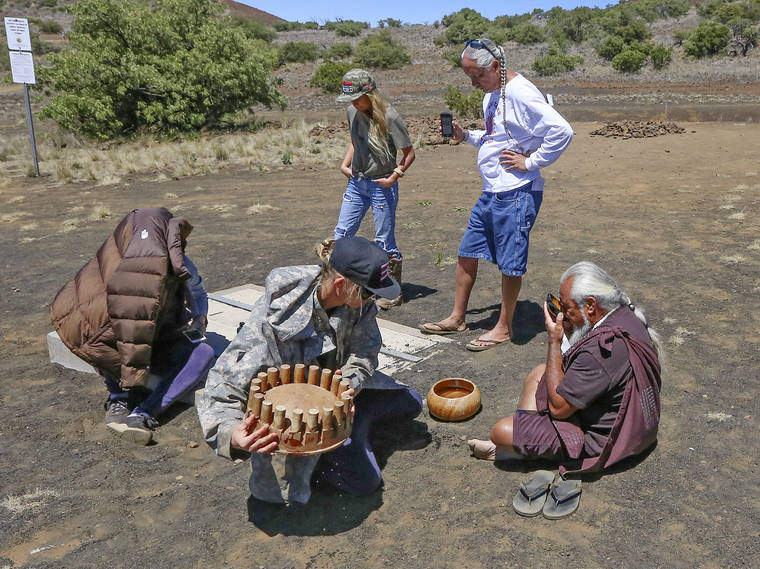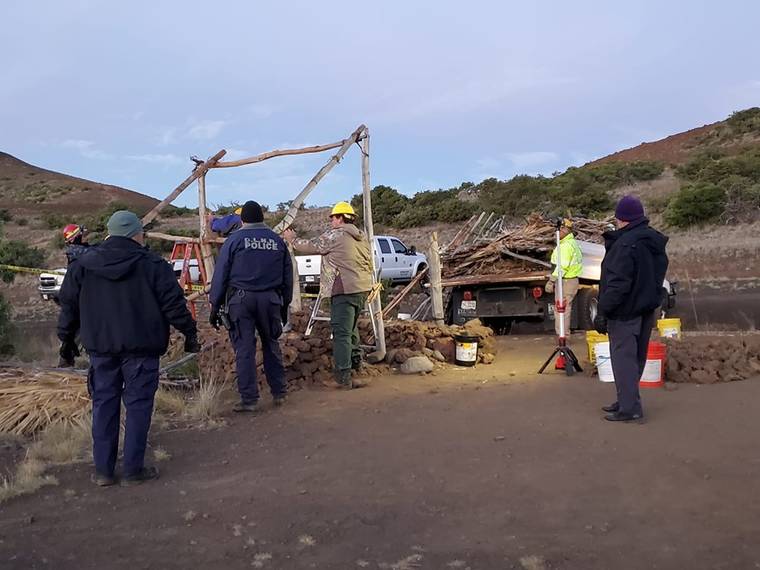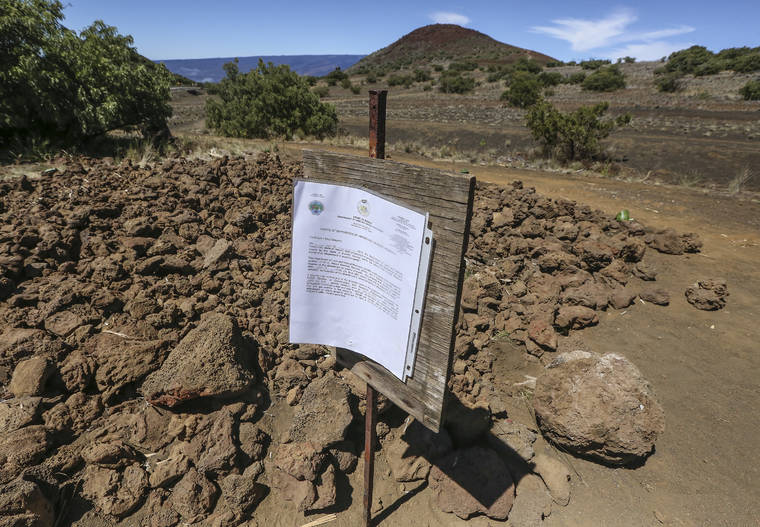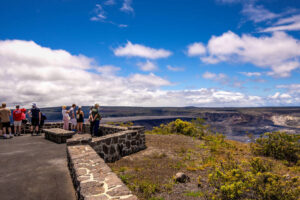UPDATED WITH FULL STORY: Construction of TMT authorized; opponents vow to ‘fight for our rights’




Public officials and opponents of the Thirty Meter Telescope are bracing for a potential showdown after construction of the project was authorized by the state.
Gov. David Ige announced Thursday that the state Department of Land and Natural Resources issued a notice to proceed to the University of Hawaii at Hilo to allow construction of the long-challenged telescope atop Maunakea to begin.
ADVERTISING
Construction is expected to start this summer.
Henry Yang, chair of the TMT International Observatory Board of Governors, said he was pleased that the $1.4 billion observatory is finally ready to be built after four years of delay.
“TMT is pleased and grateful that the notice to proceed has been issued by the Department of Land and Natural Resources to the University of Hawaii,” Yang said in a statement. “We remain committed to being good stewards of Maunakea, and to honoring and respecting the culture and traditions of Hawaii.”
While Ige announced the notice to proceed at a press conference Thursday morning, opponents of the telescope — who often refer to themselves as “protectors” — became aware of new TMT developments in the early hours of Thursday when DLNR officers arrived at Maunakea to remove four unpermitted structures.
Chase Kahookahi Kanuha, a longtime opponent of the telescope, said he saw “close to 100” officers arrive at the mountain around 4 a.m. and split into three groups.
The first group, Kanuha said, focused on dismantling a structure called Hale o Kuhio, located at the beginning of the Maunakea Access Road. Hale o Kuhio was built by Hawaiians in 2018 as a “checkpoint.”
The second group dismantled a structure near the Maunakea Visitor Information Station called Hale o Kukiaimauna, built during the 2015 protests that blocked initial construction of the telescope.
The third group of officers dismantled a pair of ahu, or altars, at the TMT site itself, one directly inside the TMT site plan and in the middle of the road leading to the site. Kanuha said he was near the ahu when he saw the arrival of officers and attempted to approach them as they dismantled Hale o Kukiaimauna.
“They said I was not allowed to proceed; they said I had no choice but to leave or I would be arrested,” Kanuha said. When he refused to leave, Kanuha was arrested for obstruction of government operations, a misdemeanor.
All four structures were dismantled. State Attorney General Clare Connors said the construction materials of each structure can be reclaimed by their owners.
“I get wanting to clear the ahu for being in the way,” Kanuha said. “But taking down the hale is just a slap in the face of Hawaiians. Just a show of power.”
Kanuha said that the removal of two ahu sites and Hale o Kukiaimauna, a place of worship for some Hawaiians, amounted to an act of “cultural erasure” against Native Hawaiians. Not only is the sanctity of Maunakea — the most sacred mountain in Hawaiian culture — being violated, he said, but now Native Hawaiians are no longer allowed to worship peacefully on the mountain.
Connors confirmed that the ahu needed to be removed in order to begin construction, saying that Native Hawaiian cultural advisers determined that the ahu had no traditional or customary significance.
The ahu were erected in 2015 and had iwi — bones — of unknown origin briefly interred within by Hilo resident Palikapu Dedman in an effort to demonstrate that the site is a Hawaiian burial site. According to a 2016 DLNR report, Dedman claimed that he was asked to place the iwi within the ahu by TMT opponents in order to lend cultural credence to beliefs that the TMT site is sacred.
The hale, meanwhile, were removed because they were unpermitted, and could potentially interfere with the transport of personnel and material to the TMT site.
Connors and Ige expressed sympathy with opponents of TMT, and said they supported the opponents’ rights to continue to peacefully and legally protest against the telescope’s construction. However, Connors urged opponents to continue “the conversation” about the telescope away from Maunakea proper, citing health hazards associated with the high altitudes.
“(Workers) will need safe access to the work site and safe conditions under which to work,” Connors said. “The state will work to ensure their safety as well as the right of individuals to engage in speech about the project.”
Ige said he believes the state now has sufficient legal basis for construction to go more smoothly than it did following the telescope’s 2014 groundbreaking. After significant protests in 2014 and 2015, the state Supreme Court ruled in 2015 that a 2011 permit from the state Board of Land and Natural Resources was invalid after finding the Land Board violated due process rights of project opponents by voting before the first contested case was held.
However, the Supreme Court approved an amended permit late last year, allowing the project to seek a notice to proceed. The conditions of the amended permit state that the TMT will be the last telescope to be built on Maunakea and that five other telescopes at the summit will be decommissioned and removed.
Despite Ige’s confidence in the process, opponents are preparing for further protests. Kanuha said he intends to “try and stop it the same way we did the first time.”
“This is about more than the mountain, this is about how we treat land and natural resources in Hawaii,” Kanuha said. “If we allow this to happen, we can kiss goodbye all we hold precious in Hawaii. It’s just a matter of time.”
Another protester, Lakea Trask, warned of an inevitable conflict.
“The state is declaring war on Hawaiians,” said Trask, who was arrested and charged with trespassing during the 2015 protests. “The state is now using TMT to declare war, an all-out war on Hawaiians.”
“I’ve already heard from many Hawaiians who are making preparations to come and stand with us and to prepare themselves … physically, mentally and spiritually to do the next part of what we have to do, which is to remain calm to remain in kapu aloha and to fight for our rights, for the justice that we deserve,” Trask went on.
Indeed, there were unconfirmed reports Thursday evening that a new ahu had been erected on Maunakea, less than a day after the previous structures were dismantled.
While Connors said the state intends to keep the public abreast of construction updates, she did not confirm whether the start date of construction will be shared with the public. Similarly, Ige did not confirm whether the National Guard will be deployed.
The question of how to keep the peace is foremost on the minds of county and state officials. While Connors assured that law enforcement personnel will remain on site during the construction process to keep the peace, the degree of police presence is yet unknown.
Puna County Councilman Matt Kaneali‘i-Kleinfelder said he will request a report from county officials to determine the extent of county agency activity on the mountain, including the amount of police personnel. Earlier this year, Connors said Hawaii County will be the lead agency in responding to TMT protests.
Hawaii Police Department Chief Paul Ferreira said how police will respond depends on how the situation unfolds.
“The actions that happen on the mountain will dictate what our actions will be,” Ferreira said. “We’re a law enforcement agency. We don’t take sides whether TMT should be constructed or not. Like in 2015, if the road is blocked, we’re going to have to take enforcement action and make arrests. If, when construction starts, the trucks are allowed to go free up the mountain, then we won’t be called up there.”
Ferreira said some situations might require Saddle Road to be closed, such as if the road is blocked for any reason.
He also said the police are prepared in case protests turn violent.
“We were prepared for contingencies in 2015; we’re prepared for contingencies now, as well,” Ferreira said. “Our officers train, just as I trained back when I was a patrol officer, how to deal with crowds, how to deal with conflicts. We’re all hoping everything goes peaceful, everything goes well. But in law enforcement, you always have to be prepared for the unknown.”
Mayor Harry Kim said he is “trying to find a way to a good solution” to the conflict over the telescope.
“Obviously, this is something that’s going to be quite difficult,” Kim said, adding that a good solution will require “a lot of cooperation by both state and people of the (telescope), as well as, obviously, the people who oppose the telescopes up there.”
“How successful we will be, only time will tell,” Kim said.







